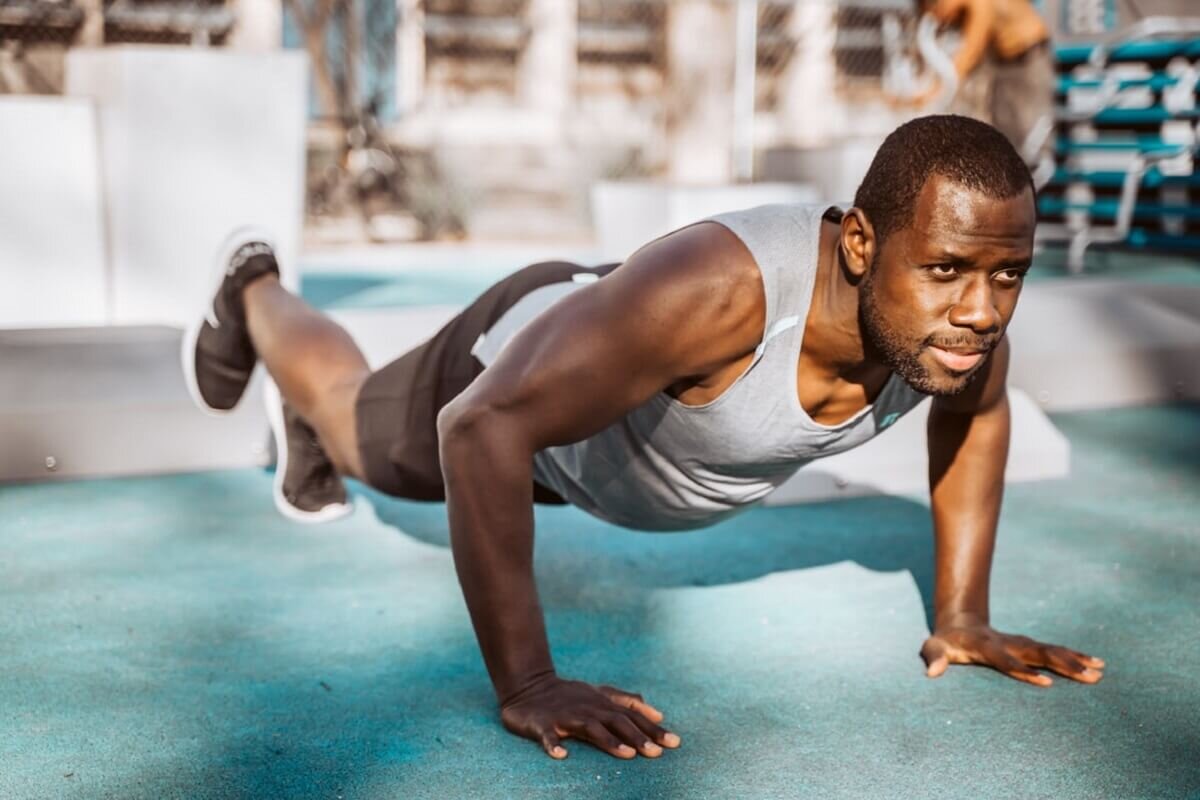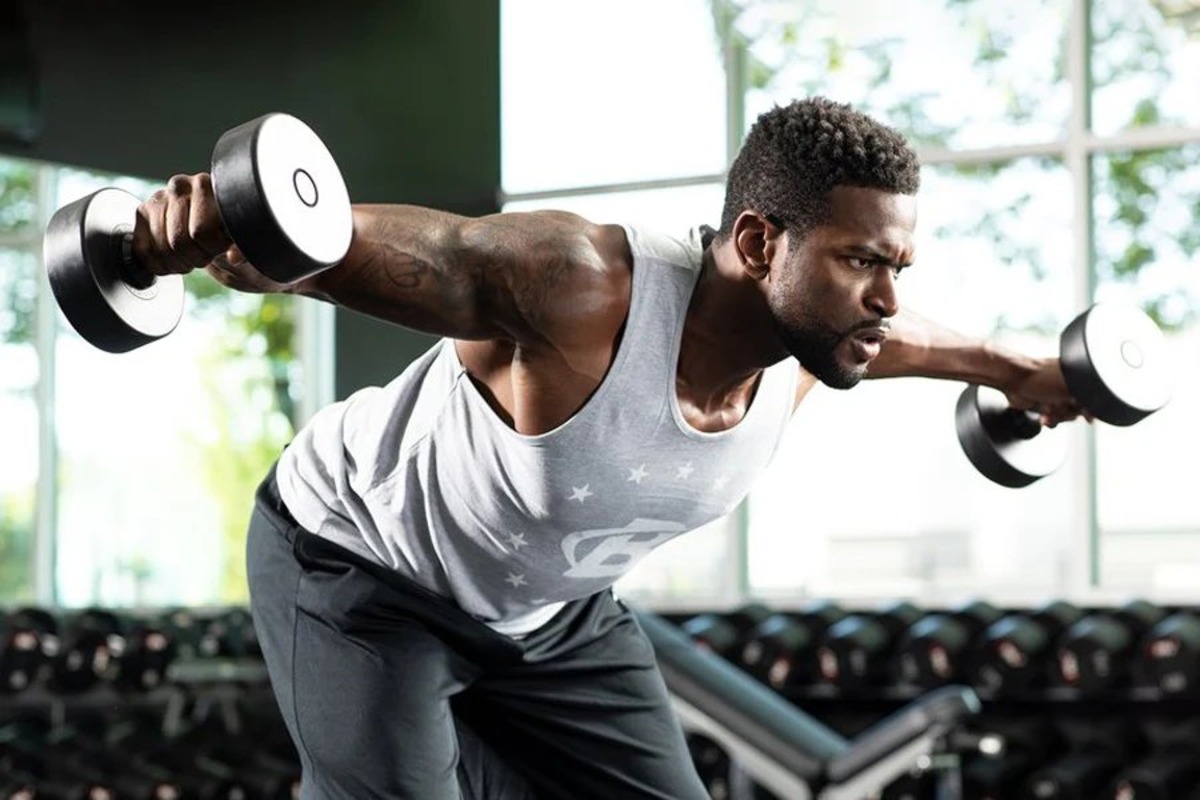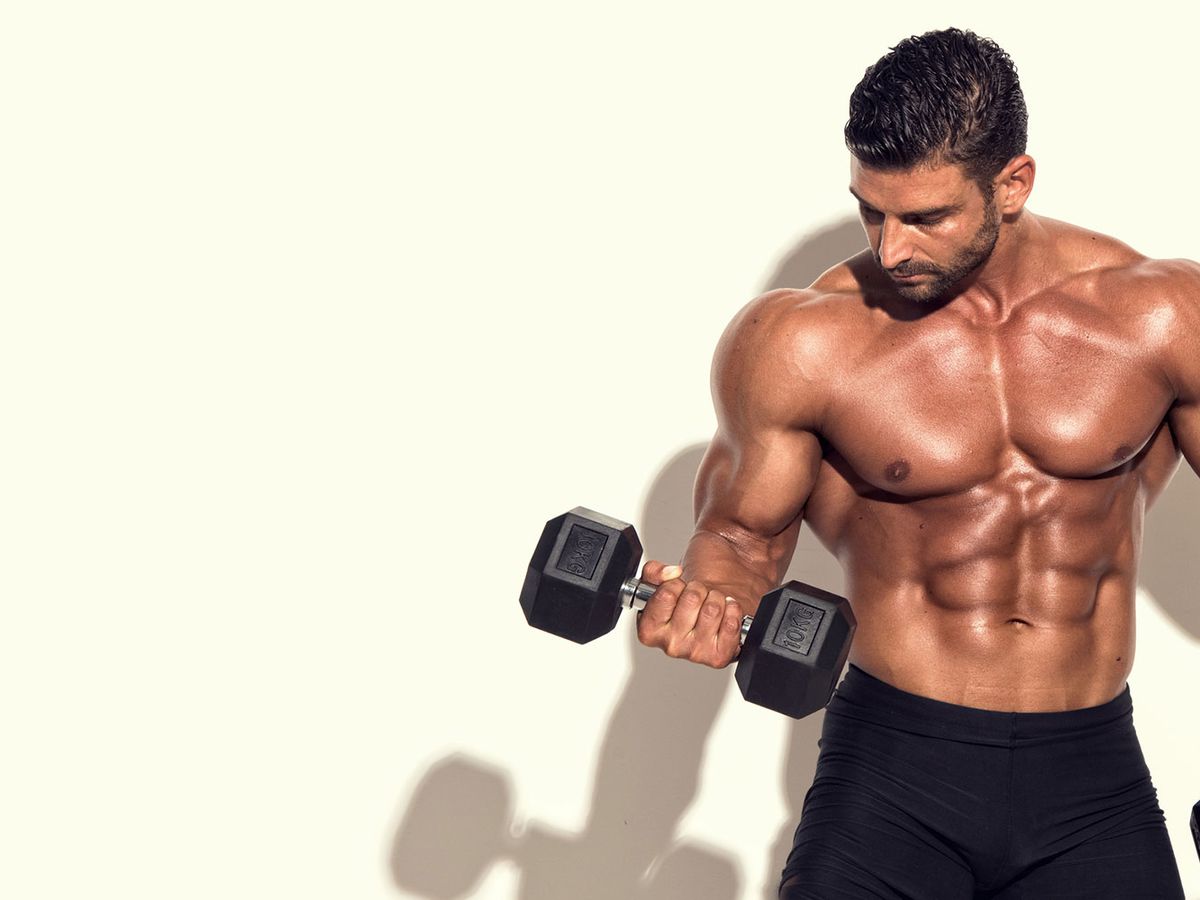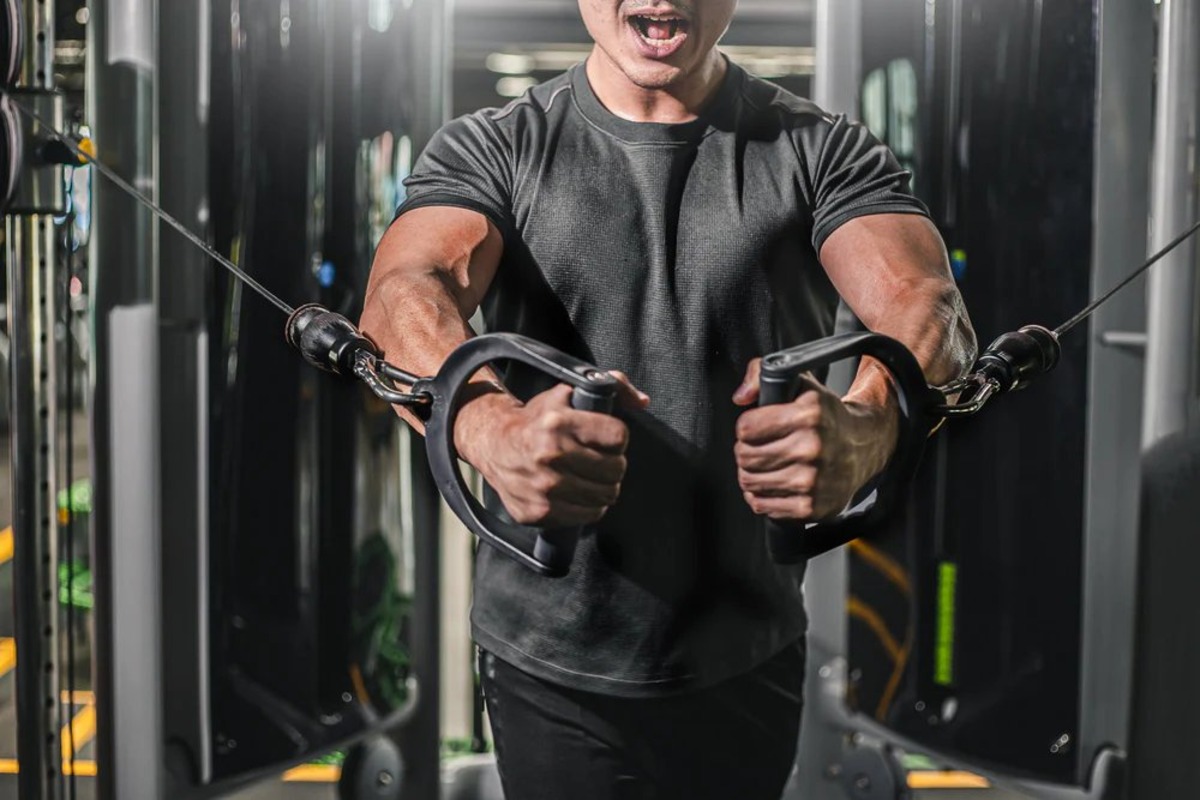Home>Health and Wellness>Top Calisthenic Exercises For Killer Biceps!


Health and Wellness
Top Calisthenic Exercises For Killer Biceps!
Published: January 13, 2024
Improve your health and wellness with these top calisthenic exercises for killer biceps. Get fit and strong with these effective workouts!
(Many of the links in this article redirect to a specific reviewed product. Your purchase of these products through affiliate links helps to generate commission for Noodls.com, at no extra cost. Learn more)
Table of Contents
Introduction
When it comes to sculpting strong and defined biceps, calisthenic exercises are a game-changer. These bodyweight exercises not only help in building impressive arm muscles but also improve overall strength and endurance. Calisthenics, derived from the Greek words "kalos" (beautiful) and "sthenos" (strength), emphasize using one's body weight for resistance, making them accessible and effective for individuals of all fitness levels.
By incorporating these top calisthenic exercises into your workout routine, you can achieve killer biceps without the need for expensive equipment or a gym membership. From pull-ups and chin-ups to dips and inverted rows, these exercises target the biceps and surrounding muscles, promoting significant growth and toning. Additionally, they engage the core and stabilizing muscles, enhancing overall functional strength and balance.
So, if you're ready to take your arm workout to the next level and achieve impressive biceps, join us as we explore the top calisthenic exercises that will help you achieve your fitness goals. Let's dive into these exercises and unleash the full potential of your biceps!
Pull-Ups
Pull-ups are a classic and highly effective calisthenic exercise that primarily targets the biceps, along with engaging the back, shoulders, and forearms. This compound movement not only builds impressive arm strength but also contributes to overall upper body development.
To perform a pull-up, start by gripping an overhead bar with your hands slightly wider than shoulder-width apart and palms facing away from you. Hang with your arms fully extended, engage your core, and then pull yourself up until your chin clears the bar. Lower yourself back down with control to complete one repetition.
The beauty of pull-ups lies in their versatility and scalability. Beginners can start with assisted pull-ups using a resistance band or an assisted pull-up machine, gradually building strength to perform unassisted repetitions. As strength increases, variations such as wide-grip pull-ups, narrow-grip pull-ups, and weighted pull-ups can be incorporated to continually challenge the biceps and surrounding muscles.
In addition to targeting the biceps, pull-ups are an excellent way to improve grip strength, which is essential for various functional movements and exercises. Furthermore, the engagement of the back muscles in this exercise promotes balanced upper body development, making it a valuable addition to any calisthenics routine.
Consistency and proper form are key when performing pull-ups to maximize their effectiveness and minimize the risk of injury. Focus on controlled movements, avoid swinging, and strive for full range of motion with each repetition. Gradually increasing the number of repetitions and sets will lead to noticeable improvements in bicep strength and definition over time.
Incorporating pull-ups into your regular workout routine, whether at home or in the gym, can yield significant benefits for your biceps and overall upper body strength. As you progress and master this fundamental calisthenic exercise, you'll not only achieve killer biceps but also experience enhanced functional strength and athleticism. So, grab that bar and start mastering the pull-up to unlock the full potential of your biceps!
Chin-Ups
Chin-ups are a powerhouse calisthenic exercise renowned for their exceptional ability to target the biceps and upper body musculature. This exercise, often favored by fitness enthusiasts and athletes, offers a challenging yet rewarding way to build substantial bicep strength and definition.
To perform a chin-up, begin by gripping an overhead bar with your palms facing towards you, hands positioned shoulder-width apart. With your arms fully extended, engage your core and initiate the upward movement by pulling yourself up until your chin clears the bar. Lower yourself down in a controlled manner to complete one repetition.
The supinated grip (palms facing towards you) in chin-ups places a significant emphasis on the biceps, making it an ideal exercise for achieving impressive bicep development. As you pull your body weight upward, the biceps are engaged dynamically, leading to increased muscle activation and growth over time.
Similar to pull-ups, chin-ups offer versatility in terms of progression and variation. Beginners can start with assisted chin-ups using a resistance band or an assisted pull-up machine, gradually working towards unassisted repetitions. As strength improves, incorporating weighted chin-ups or eccentric chin-ups (focusing on the lowering phase) can provide a challenging stimulus for further bicep development.
The benefits of incorporating chin-ups into your workout routine extend beyond bicep strength. This exercise also engages the muscles of the back, shoulders, and forearms, contributing to overall upper body development and functional strength. Additionally, the core muscles are activated to stabilize the body throughout the movement, further enhancing core strength and stability.
Maintaining proper form and technique is crucial for optimizing the effectiveness of chin-ups. Focus on initiating the movement with the biceps, avoid excessive swinging, and aim for a full range of motion with each repetition. Gradually increasing the intensity by adding more repetitions or exploring advanced variations will lead to noticeable improvements in bicep strength and definition.
By consistently integrating chin-ups into your workout regimen, you can expect to see significant advancements in bicep strength and aesthetic appeal. This calisthenic exercise not only contributes to the development of killer biceps but also fosters overall upper body strength and muscular balance. Embrace the challenge of chin-ups and witness the transformative impact they can have on your bicep development and strength.
Dips
Dips are a dynamic and effective calisthenic exercise that targets the triceps, chest, shoulders, and, importantly, the biceps. This compound movement not only contributes to upper body strength and development but also serves as a potent exercise for sculpting impressive biceps.
To perform a dip, begin by gripping parallel bars or a sturdy surface with your arms fully extended and your body suspended above the bars. Lower your body by bending your arms until your elbows are at a 90-degree angle, then push yourself back up to the starting position to complete one repetition.
The execution of dips engages the triceps and chest muscles, while the movement also places a substantial load on the biceps. As you lower your body, the biceps are dynamically activated to support the movement, leading to significant muscle engagement and growth over time.
Dips offer versatility in terms of progression and adaptation to different fitness levels. Beginners can start with assisted dips using a resistance band or an assisted dip machine, gradually building strength to perform unassisted repetitions. As proficiency increases, adding additional weight with a dip belt or exploring advanced variations such as Russian dips can provide a challenging stimulus for further bicep development.
In addition to targeting the biceps, dips contribute to overall upper body strength and muscular balance. The engagement of the chest and shoulder muscles complements the activation of the biceps, promoting comprehensive upper body development and functional strength. Furthermore, the core muscles are actively involved in stabilizing the body throughout the movement, enhancing core strength and stability.
Maintaining proper form and technique is essential for maximizing the effectiveness of dips. Focus on controlled movements, avoid excessive leaning forward, and aim for a full range of motion with each repetition. Gradually increasing the intensity by adding more repetitions or exploring advanced variations will lead to noticeable improvements in bicep strength and definition.
By consistently integrating dips into your workout routine, you can expect to witness significant advancements in bicep strength and aesthetic appeal. This calisthenic exercise not only contributes to the development of killer biceps but also fosters overall upper body strength and muscular balance. Embrace the challenge of dips and experience the transformative impact they can have on your bicep development and strength.
Inverted Rows
Inverted rows, also known as bodyweight rows or Australian pull-ups, are a versatile and effective calisthenic exercise that targets the muscles of the upper back, biceps, and shoulders. This bodyweight movement serves as an excellent alternative to traditional barbell rows and offers unique benefits for building strength and muscular endurance in the upper body.
To perform inverted rows, you'll need a sturdy horizontal bar or a suspension trainer. Begin by positioning yourself under the bar or suspension trainer, gripping it with an overhand grip, and extending your arms. Your body should be in a straight line from head to heels. Initiate the movement by pulling your chest towards the bar while keeping your body rigid, then lower yourself back down to complete one repetition.
Inverted rows place a significant emphasis on the muscles of the upper back, including the latissimus dorsi, rhomboids, and trapezius, while also engaging the biceps as dynamic stabilizers. The pulling motion activates the biceps, leading to increased muscle engagement and growth over time. This exercise effectively complements other pulling movements and contributes to balanced upper body development.
One of the key advantages of inverted rows is their scalability and adaptability to different fitness levels. Beginners can modify the exercise by adjusting the angle of the body or utilizing a higher bar, making it more manageable to perform. As strength and proficiency increase, lowering the bar or transitioning to a horizontal position can intensify the exercise, providing a greater challenge for the biceps and upper back muscles.
Incorporating inverted rows into your workout routine offers numerous benefits beyond bicep development. The engagement of the upper back muscles promotes improved posture, shoulder stability, and overall upper body strength. Additionally, the core muscles are activated to maintain body alignment throughout the movement, enhancing core stability and functional strength.
Maintaining proper form and control is essential for maximizing the effectiveness of inverted rows. Focus on pulling with the upper back and biceps, avoid excessive swinging, and aim for a full range of motion with each repetition. Gradually increasing the intensity by adjusting body angle or exploring advanced variations will lead to noticeable improvements in bicep strength and definition.
Consistent integration of inverted rows into your calisthenics routine can lead to significant advancements in bicep strength and overall upper body development. Embrace the challenge of inverted rows and experience the transformative impact they can have on your bicep development and strength.
Read more: Boost Your Hamstring Strength With These Killer Exercises – No More Grip Strength Issues!
Push-Ups
Push-ups are a timeless and versatile calisthenic exercise that not only target the chest and triceps but also engage the biceps as dynamic stabilizers, contributing to comprehensive upper body development. This classic bodyweight movement offers a multitude of variations and progression options, making it a cornerstone exercise for building bicep strength and endurance.
To perform a standard push-up, begin in a plank position with your hands positioned slightly wider than shoulder-width apart and your body forming a straight line from head to heels. Lower your body by bending your arms until your chest nearly touches the ground, then push yourself back up to the starting position to complete one repetition.
The execution of push-ups engages the chest and triceps as primary movers, while the biceps play a crucial role in stabilizing the arms and supporting the movement. As you lower and push your body weight, the biceps are dynamically activated, leading to increased muscle engagement and development over time.
One of the key advantages of push-ups is their adaptability to different fitness levels and goals. Beginners can modify the exercise by performing incline push-ups, utilizing an elevated surface to reduce the intensity. As strength and proficiency increase, progressing to decline push-ups or exploring challenging variations such as diamond push-ups can provide a greater stimulus for the biceps and upper body musculature.
In addition to targeting the biceps, push-ups offer a range of benefits for overall upper body strength and stability. The engagement of the chest, triceps, and shoulders contributes to balanced upper body development, while the core muscles are actively involved in stabilizing the body throughout the movement, promoting core strength and stability.
Maintaining proper form and control is essential for optimizing the effectiveness of push-ups. Focus on performing the movement with a full range of motion, avoid sagging or arching the back, and ensure consistent engagement of the biceps throughout each repetition. Gradually increasing the intensity by exploring advanced variations or incorporating tempo and plyometric variations can lead to noticeable improvements in bicep strength and definition.
By consistently integrating push-ups into your calisthenics routine, you can expect to experience significant advancements in bicep strength and overall upper body development. Embrace the versatility of push-ups and witness the transformative impact they can have on your bicep development and strength.
Conclusion
In conclusion, the journey to achieving killer biceps through calisthenic exercises is an empowering and rewarding endeavor. The top calisthenic exercises highlighted in this article, including pull-ups, chin-ups, dips, inverted rows, and push-ups, offer a holistic approach to bicep development and upper body strength. By integrating these exercises into your regular workout routine, you can embark on a transformative fitness journey that not only enhances the aesthetic appeal of your biceps but also fosters functional strength and muscular balance.
The versatility and scalability of calisthenic exercises make them accessible to individuals of all fitness levels, from beginners to seasoned athletes. Whether you're performing assisted variations to build foundational strength or exploring advanced progressions to challenge your limits, these exercises adapt to your capabilities and provide a pathway for continuous growth and improvement.
Furthermore, the engagement of multiple muscle groups in each calisthenic exercise contributes to comprehensive upper body development. While the primary focus may be on the biceps, the involvement of the back, chest, shoulders, and core muscles creates a synergistic effect that promotes balanced strength and functional fitness.
Consistency, proper form, and progressive overload are key principles that drive the effectiveness of calisthenic exercises for bicep development. By adhering to these principles and gradually increasing the intensity and complexity of your workouts, you can unlock the full potential of your biceps and experience tangible progress over time.
Moreover, the accessibility and minimal equipment requirements of calisthenic exercises make them a practical choice for individuals seeking to sculpt impressive biceps without the need for specialized gym equipment. Whether you prefer to work out at home, in a park, or while traveling, these exercises can be seamlessly integrated into your fitness routine, offering unparalleled convenience and flexibility.
In essence, the top calisthenic exercises for killer biceps not only contribute to physical transformation but also embody the spirit of empowerment and self-improvement. As you embark on this journey, embrace the challenges, celebrate the victories, and remain committed to your fitness goals. By harnessing the power of calisthenics, you can sculpt biceps that exude strength and resilience, reflecting the dedication and determination embedded within your fitness journey.














